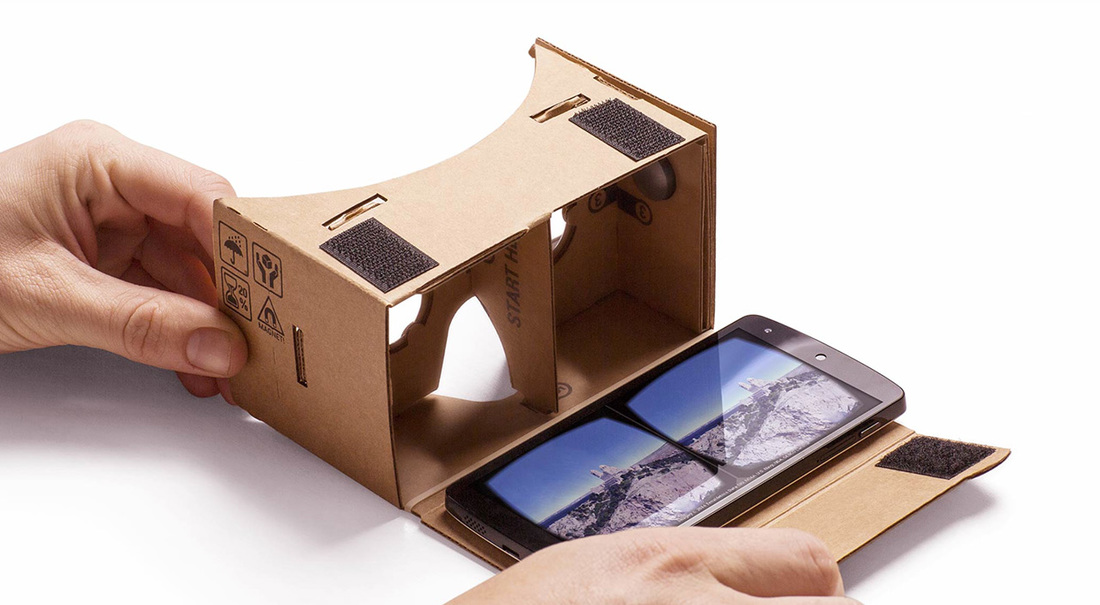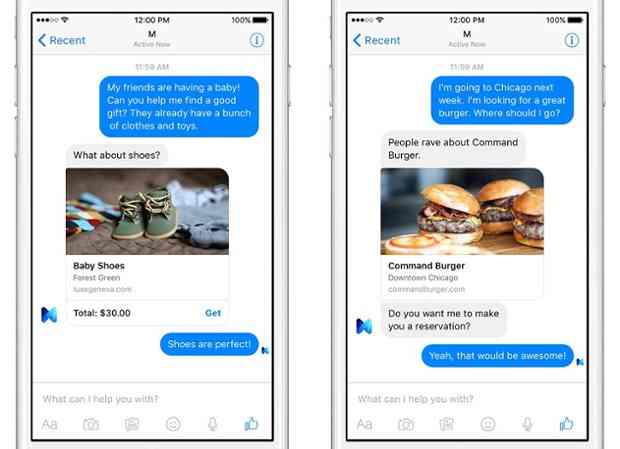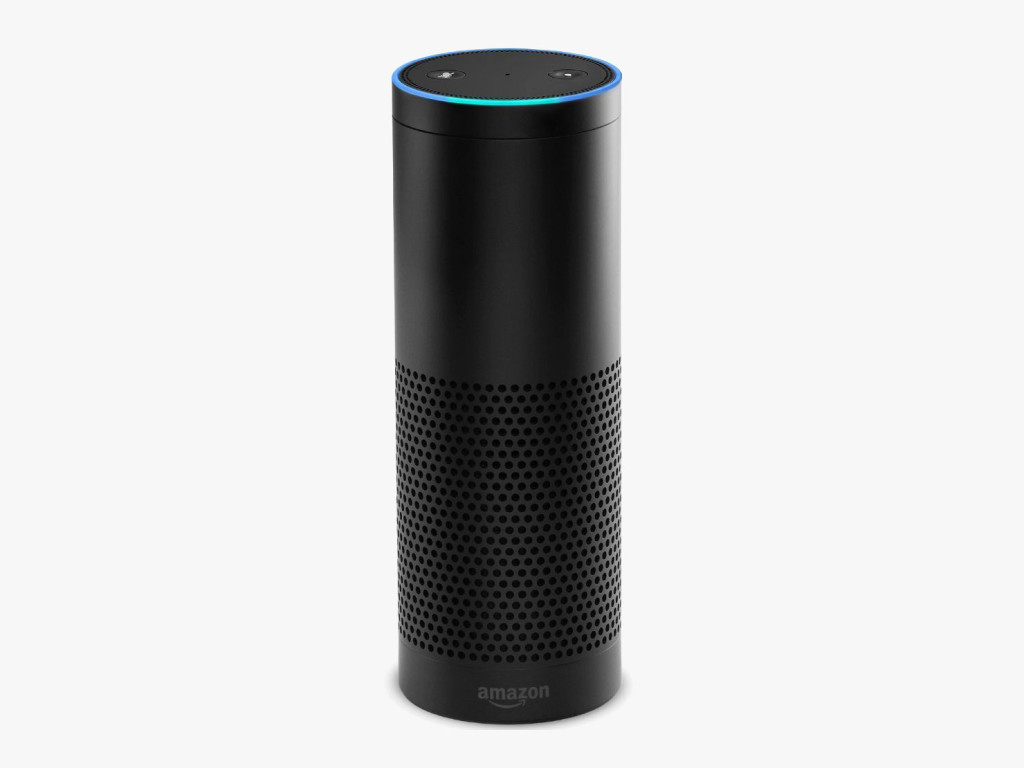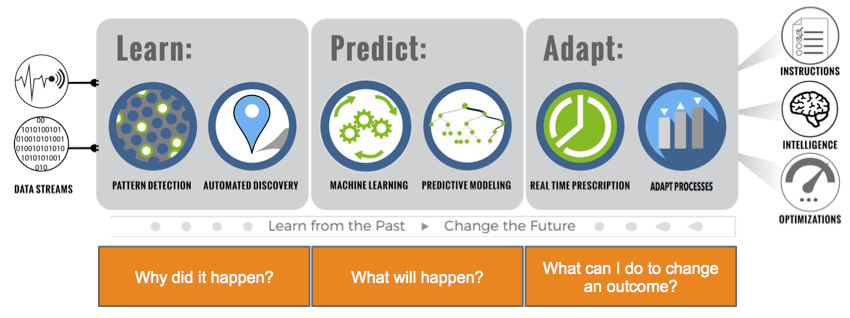What’s In Store For Digital In The Next 12 Months?

Henry Ford once said, “If I asked the people what they wanted, they would have said a faster horse”, and in this opinion piece, Customer Experience Director at TBWA\Melbourne Billy Loizou explores the trends in digital, and takes a stab at predicting what will be the next big thing for the industry.
Henry Ford in the late 1800’s was a pioneer in the automobile industry. Consider this: By the end of 2017 driverless cars will no longer just be an idea, they could very likely become reality. How does that change our lives and how much more potential time does that unlock between our day-to-day activities.
These big ideas and innovations are why I go to work everyday – growth, sustainability, evolution and pushing the boundaries of customer experience.
Creativity is thinking up new things, innovation is doing new things. To simplify, businesses today have two key areas they need to accelerate in, and that’s marketing and innovation. Innovation is change that unlocks new value and marketing is demonstrating and selling that value.
Amidst the rapid pace of innovation, changing consumer expectations, and the plummeting cost of advanced technology, there is immense opportunity for organisations, governments and society.
Digital is disrupting traditional business models and changing consumer behaviours. The mobile phone is no longer a device to make a phone call, it is an omni-channel computer in our pockets that allows us to control our finances, track our health, make purchases and communicate with the world.
Here’s a closer look at the first five digital trends expected to influence the next generation of experiences:
1. Virtual Reality
Virtual Reality will become mainstream and debut in 2016 with the first consumer versions of Sony, Oculus, and the HTC Vive hitting the market. Companies and designers will now start thinking about how they can go beyond the gaming experience and bring VR into everyday lives for things like tourism or watching live sports.
For example it’s the 2016 AFL Grand Final and you can buy a virtual ticket, sit amongst the cheer squad behind the goals, hear the crowd roar and at any stage – change your perspective and angle.
Google have created a great cheap alternative to educate and get consumers familiar with Virtual Reality, they call it Google Cardboard. For $20 you can buy a cardboard headset and use your smartphone as the screen. See the example below:
 2. Augmented Reality
2. Augmented Reality
Augmented Reality is the integration of digital information with the user’s environment in real time. Unlike virtual reality, which creates a totally artificial environment, augmented reality uses the existing environment and overlays new information on top of it.
Some amazing apps have been released which can enhance your experience and give an almost real life perspective. Companies like IKEA, L’Oreal and Glasses.com allow you to interact with their products without having to visit their physical store. For example, L’Oreal have released an app that allows you to try on make up from the comfort of your own home. The app is called ‘Make Up Genius’ and the concept and execution is remarkable.
The investment in this line of work is becoming larger every year and industry leaders Magic Leap have just raised $793.5 million dollars in funding from the Alibaba Group. Their mission is creating a new world where digital and physical realities seamlessly blend together to enable amazing new experiences. Here is an example of some their work:
3. Virtual Assistant. Help me.
Not everyone is fortunate enough to have assistants that can take care of some of their day-to-day tasks. In today’s fast paced world, increasing productivity is up there as one of the top 5 requirements for most CEO’s. Welcome Facebook M, a personal digital assistant inside of Messenger that completes tasks and finds information on your behalf.
It’s powered by artificial intelligence that’s trained and supervised by actual people. Thanks to Facebook, everyday people will be able to get simple tasks done for them like making a restaurant reservation, ordering takeaway, buying flowers for loved ones, finding local dog friendly beaches and much more.
One of M’s most popular requests from its Facebook employee testers, was that the service can call your telco company and endure the endless hold times and automated messages to help you set up home wifi or cancel your Foxtel. The main differentiator between Facebook M and Siri is that their is an actual person on hold for you called a Facebook M trainer.
Facebook’s M trainers have customer service backgrounds. They make the trickier judgment calls, and perform other tasks that software can’t. If you ask M to plan a birthday dinner for your friend, the software might book the Uber and the restaurant, but a person might surprise your friend at the end of the night by sending over birthday cupcakes from her favourite bakery.
Over time Facebook will use complex AI with their history of data to predict these outcomes to reduce the burden on their trainers.
4. Voice Activation. Listen to me.
In the latest release of Wi-Fi gadgets, Amazon have launched a speaker that listens. The Amazon Echo is a cylindrical bluetooth speaker that listens when you talk to it. For those who enjoy making noise or bossing around inanimate objects then this a great device for you.
The most obvious use case for Echo is to play music or podcasts. However the future use would be to connect it to your other smart devices. Right now Echo works with SmartThings, Insteon, WeMo, Hue and Wink devices, which covers most of your bases.
Commands are mostly limited to turning things on or off, or brightening or dimming lights. These might be basic triggers but the future is quite exciting if all you have to do is yell out from bed for a coffee or to turn on the air-conditioning.
Machine learning is a type of artificial intelligence that provides computers with the ability to learn without being explicitly programmed. Machine learning focuses on the development of computer programs that can teach themselves to grow and change when exposed to new data. The process of machine learning is similar to that of data mining. Both systems search through data to look for patterns.
Marketers can leverage this technology in multiple ways when creating customer journeys. The journeys themselves will adapt, restructure and remodel themselves to become more successful overtime by understanding the moments when customers are most likely to engage.
Machine learning will allow you to optimise in real-time based on the history of data available. Companies like Salesforce are leading the race by acquiring PredicitionIO, a start up based out of Palo Alto that have developed an open source-based machine learning server.
Please login with linkedin to comment
einsightsLatest News

TV Ratings (18/04/2024): I’m A Celebrity Wins Prime Time And Key Demos
Aussie viewers can be a harsh lot at times. Only days after Ellie Cole bled her heart out, she has been sent packing.

Effie&co Launches New ConnectAsia Division To Help Aussie Brands Market To Asian Consumers Overseas & At Home
Not provided is advice on using chopsticks and not spilling ramen down your shirt.

Cashrewards Sets Out Stall For New CMO
Thinking of applying for the Cashrewards CMO gig? Here are some insider tips that, yes, are tantamount to cheating.

‘I Ask For The TV Industry To Stand Up And Defend Itself’ – Seven Boss James Warburton Steps Down
The Seven supremo heads for the exits after five years. Here's hoping the Spotlight team organised the farewell bash.

Poh! Jamie! Adriano! Paramount ANZ reveals its tasty plans for this year’s MasterChef
It's your fan's guide to this year's MasterChef! Although no tips on how to pronounce crudités or use a un fait-tout.

Dentsu’s iProspect Partners With MOOD Tea Ahead Of May Campaign Launch
We love a Mood Tea here at B&T. Although we do store old screws and nails in the International Roast caterer's tin.

Opinion: When Culture Starts Eating Itself: Navigating The Age Of Self-eating Nostalgia
Born boss David Coupland asks is adland going through a nostalgia period? But please, no repeats of Best Of Red Faces.

Who’s Going To Cannes?! The TikTok Young Lions Winners!
It's Aussie adland's next gen! They're off to Cannes with high hopes of bringing back a Lion & a foot-long Toblerone.

Adobe Launches Express Mobile App With Firefly AI
Want to be the coolest kid at Friday staff drinks but forgot your retro Nikes? This new Adobe wizardry may do the trick.

ThinkNewsBrands & IMAA Extend News Publishing Education In Brisbane
Industry duo takes its publishing roadshow to Brisbane. Was disappointed no male attendees were wearing walk socks.

B&T Chats With Wavemaker’s Provocative Pioneers On Their Cross-Pacific Sojourn
B&T TV heads to Wavemaker's Sydney digs to interview two staffers from its New York & LA digs. If that makes sense?

HoMie & Champion Launch “Give One. Get One” Campaign Supporting Youth Homelessness Via Town Square
Much like the fête's prized chutney wears a blue winners sash, so too should this top initiative from HoMie & Champion.

Thinkerbell Takes Us Back To Summer In Latest Work For XXXX
This beer ad wants to take you back to summer! Just minus any chance of a shark attack on your morning bus commute.

Cannes Lions Unveils 2024 Programme Featuring Queen Latifah, Jay Shetty & P&G’s Mark Pritchard
Are you one of the lucky ducks heading to Cannes in June? Check out the headliner acts you'll be queueing hours to see.

Scroll Media Recruits Costa Panagos From Twitch
Costa Panagos set to bring South American flair to the Scroll offices. Assuming that he is, indeed, South American.

Year13, Microsoft & KPMG Australia Launch AI Course For Gen Zs
Born around the 2000s? Need to amp up your AI creds? This guide's for you (although it's not really that age specific).

General Motors Snares Heath Walker From Scania
Do you rage about oversized American cars on our roads? You need to bail up Heath Walker at parties & industry events.

VML Launches New “Envoyage” Brand For Flight Centre
VML unveils new brand for travel operator Flight Centre. Alas, no sign of those paid actors pretending to be pilots.

Subaru Places Media Account Up For Review
Subaru puts media up for review, as adland journos get set for mandatory "agency drives off with..." headline.

TV Ratings (17/04/2024): Contestants Faced With Harsh Realities As Alone Australia Heats Up (Or Cools Down)
Alone still doing the business for SBS. Overly long train journeys not doing the business, but they persist anyway.

Ben Fordham Loses Number One Spot As Ray Hadley Celebrates 156th Ratings Win
The radio numbers are in! Discover who's off for a boozy lunch today & who's waiting for the dreaded HR death knock.

Gourmet Ice Cream Brand Connoisseur Launches New “Thrill Your Senses” Iteration, Via SICKDOGWOLFMAN
Rattling the old "truth in advertising" adage comes this ice-cream spot full of noticeably thin people.

Paramount’s Global Sales Boss: ‘Australia’s Converged Model Is A Blueprint For How I’d Like All Of Our Markets To Be’
Paramount's global sales boss gives local sales ops the thumbs up. Didn't weigh-in on the Lisa Wilkinson debacle.

TikTok Starts Testing Its Instagram Rival In Australia
In exciting news for piano playing cats & brattish pranks in shopping centres, TikTok unveils its Insta rival plans.

Man Wrongly Named By Seven As Bondi Killer Hires Lawyers
Struggling to save for a house deposit? Why not get wrongly identified by Sunrise!

Smartsheet Appoints Indie Agency Sandbox Media To Its Media Account
Can't stand your colleagues? Like to dob them in when they miss a deadline? These work management platforms are ideal.

Boss Not Letting You Come To Cannes In Cairns? Use This Business Case To Convince Them!
Stingy boss won't spring for a ticket to Cairns? Add this to your persuasive argument repertoire. Or grovel.

Alt/shift/ Brisbane Builds Portfolio With Ausbuild Creative, PR, Content & Social Account Win
The Brisbane comms/PR agency lands constructor Ausbuild. Also hoping for a discount on its new glass conservatory.

Young Guns Versus The Old Guard: Who Adds More Value to Our Industry?
Cannes In Cairns poking this hornet's nest in a lively debate. Just so long as the oldies can get up the stairs.

70% Of Aussies Don’t Have Green Power Plans ENGIE Says In Major Brand Campaign Via HERO
Are you the notorious "light leaver on-er" in your flatshare? Quell any infighting with this green energy news.

PrettyGood Launches Offering Brand & Media Solutions For Australasian SMEs
B&T applauds the charitable nature of this new agency. Although we'd hate to see it impact any Chrissie present sends.

A Blunt End: Dolphins Medicinal Cannabis Sponsorship At Risk
Yes, it's another NRL drug story. Yet, thankfully it doesn't involve coke in Kuta during the off-season.

Slew Of New Creative Hires At Leo Burnett Australia
Ahhh, all black! The outfit of choice for agency creatives, David Jones staff and everyone in Melbourne.

Under Armour Unveils Local “Live in UA” Campaign
American apparel brand set for yet another tilt at the Aussie market, as Nike declares "we'll see about that".

Pepsi Launches New Look, Refreshing Classic Fashion Staples Via Special PR
Are you always the bridesmaid, never the bride, as the old saying goes? How do you think Pepsi feels?

Pure Blonde Returns To A Place Purer Than Yours In New Campaign Via The Monkeys
B&T's always been a huge fan of the 'drink yourself thinner' diet plan. So big thanks to Pure blonde, vodka & tequila.



